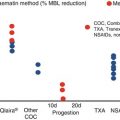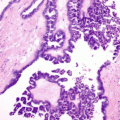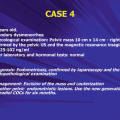© International Society of Gynecological Endocrinology 2015
Bart C. J. M. Fauser and Andrea R. Genazzani (eds.)Frontiers in Gynecological EndocrinologyISGE Series10.1007/978-3-319-09662-9_1212. In Patients with Only One or Two Oocytes, Is IVF-ET or ICSI Better?
Paolo Giovanni Artini1 , Maria Elena Rosa Obino1, Elena Carletti1, Sara Pinelli1, Giovanna Simi1, Maria Ruggiero1, Vito Cela1 and Carla Tatone2
(1)
Division of Obstetrics and Gynaecology, Department of Clinical and Experimental Medicine, University of Pisa, Pisa, Italy
(2)
Department of Biomedical Sciences and Technologies, University of L’Aquila, L’Aquila, Italy
Keywords
Assisted reproductionICSIIVFPoor responders12.1 Introduction
One of the aims of assisted reproduction technologies (ART) is the recruitment of multiple follicles ensuring the recovery of good-quality oocytes upon controlled ovarian hyperstimulation (COH). In recent years, the number of patients in whom few oocytes are obtained in response to COH is increasing. This phenomenon mainly is probably related to the postponement of childbearing to the fourth decade of life. In this group of patients, multifollicular response to COH remains a challenge, but the optimisation of laboratory strategies may help to maximise their chances of pregnancy. Ovarian response to COH varies widely among patients and is strictly dependent on the size of the ovarian pool of resting follicles, the so-called ovarian reserve [1]. In women with a reduced ovarian reserve, a poor ovarian response results in a low number of retrieved oocytes despite the high dose of gonadotropins administered. Hence, although tests for predicting ovarian reserve are available [2], the parameter that best categorises a woman as a ‘poor responder’ remains the ovarian response itself. The incidence of poor ovarian response (POR) is estimated between 9 and 24 % [3–5]. This value increases with age [3, 5] reaching about 50 % in women over 40 years [6]. Women who respond poorly to COH have pregnancy rates that vary from 7.6 to 17.5 %, while in normal responders, they vary from 25.9 to 36.7 %. Female age plays a distinct role in predicting poor response to COH; in fact, older poor responders have lower pregnancy rates (ranging between 1.5 and 12.7 %) compared with younger poor responders (ranging between 13.0 and 35 %) [2]. A second predicting factor of pregnancy outcome in poor responders is the degree of poor response. A lower number of retrieved oocytes results in fewer embryos to transfer and a lower chance of pregnancy, in addition to the expected negative effect of poor ovarian function on oocyte quality.
The choice of the technique of fertilisation to use in poor responder patients in the absence of male factor infertility is still the object of controversy.
It is well known that ICSI is usually preferred when a male factor exists, but often this technique is chosen even in case of non-male factor indication with the aim to avoid fertilisation failure [7, 8]. However, some recent studies suggest that the use of ICSI is not strictly necessary, and its use in the absence of indication is questionable [9–11].
Following the study by Moreno et al. [9] that demonstrated that the technique of fertilisation is not related to the reproductive outcome in poor responders, other authors have reported no differences in terms of fertilisation and good-quality embryo rates even in patients with one [10] or few oocytes inseminated [11]. In Italy, ART have been regulated since 2004 by Law n. 40/2004, until the decision n. 151/2009 of the Italian Constitutional Court that addressed the constitutional legitimacy of several provisions of Law n. 40. One of the crucial points of Law n. 40 was that no more than three oocytes could be inseminated, in order to prevent the formation of unnecessary embryos. All the developed embryos must be transferred into the uterus, and embryo cryopreservation was not allowed. As a result, many Italian clinics began to perform ICSI even when sperm quality was suitable for conventional IVF [11].
Natural selection of the fertilising sperm resulting from conventional IVF may improve reproductive success in poor responder patients with favourable semen quality. As a consequence, we recently compared reproductive outcomes following conventional IVF or ICSI in patients in whom only one or two oocytes were retrieved at ovarian pickup by taking into account the impact of reproductive ageing [12].
12.2 Our Study
In our recent study, we retrospectively analysed a total of 425 cycles (386 patients) attending ART at the Centre of Infertility and Assisted Reproduction of the Department of Clinical and Experimental Medicine of Pisa University between January 2007 and July 2012. Patients were all poor responders [6] and were included in the study when only one or two oocytes were retrieved during ovarian pickup and male factor infertility was absent. Patients were all aged between 27 and 47 years (mean age 38.23 years ±3.82 SD).
We divided the cycles into two groups on the basis of the technique used. IVF and ICSI groups were furthermore divided in three subgroups based on the age of women (<35 years, 35–38 years, >38 years), whose results were also compared. Patients underwent a standard controlled ovarian hyperstimulation (COH) with 150–450 UI/day of recombinant FSH and a GnRH antagonist according to basal FSH and AMH levels and age. The fertilisation technique was chosen on the basis of the clinical history of patients and reproductive outcomes in previous ART cycles. As a result, we observed that fertilisation rate, cleavage rate and good-quality embryo rate did not differ between IVF and ICSI group when these were not divided by age, while for what concerns implantation rate (13.05 vs. 5.26 %) and pregnancy rates (PRs) (16.12 vs. 6.73 %), IVF was found to be more advantageous with a level of significance of p = 0.003 and p = 0.003, respectively.
In patients under 35 years old, we did not observe any differences in fertilisation rate, cleavage rate and good-quality embryo rate between IVF and ICSI group, while we found that IVF was more advantageous for what concerns implantation rate (25.92 vs. 3.70 %; p = 0.002) and PRs (32.55 vs. 4.76 %; p = 0.001). Although miscarriage rate was higher in the IVF group, this difference was not significant.
Even in patients aged between 35 and 38 years old, we did not find any significant difference in fertilisation rate, cleavage rate and good-quality embryo rate, while implantation rate and PRs were 20 % vs. 6.34 % (p = 0.025) and 26.31 % vs. 7.01 % (p = 0.010), respectively. Even in this subgroup, despite a greater percentage of miscarriage in the IVF group, this difference was not significant.
In patients over 38 years old, there were no significant differences in fertilisation rate, cleavage rate and good-quality embryo rate, but in the ICSI group, the percentage of cycle cancelled, due to fertilisation failure or cleavage failure, was significantly higher compared to the IVF group (21.1 % vs. 10.2 %; p = 0.27). In this subgroup of patients, we did not find any differences for what concerns implantation, pregnancy and miscarriage rate.
12.3 Discussion
The question whether the choice of fertilisation procedure may be relevant to reproductive success in poor responder patients is still debated, and clear knowledge of both short- and long-term differences between IVF and ICSI fertilisation is still lacking. Although ICSI was originally indicated for treating couples with severe male factor infertility [13], in recent years some studies suggested that it could provide similar or higher fertilisation rates [14–16] and better embryo quality even in non-male factor couples [17]. Results from our recent study strongly question the superiority of ICSI over conventional IVF in patients with non-male factor infertility and lead us to hypothesise that under specific conditions, ICSI could negatively affect reproductive potential. In 1998, Moreno et al. [9] analyse 96 couples with six or fewer retrieved oocytes and observed that IVF and ICSI in the absence of male infertility factor produce the same results. The same hypothesis was proposed again by other authors [18, 10, 19]. On the other hand, our results are in contrast with Khamsi et al. [17] who observed that ICSI procedure increased fertilisation rate and good-quality embryo rate even in the absence of male factor infertility. In our study we show that on cohorts of poor responder patients with different reproductive age, the use of ICSI decreases reproductive potential in women below 35 years or aged between 35 and 38 years. Although we found no significant differences in fertilisation and cleavage rates in these subgroups of patients, IVF was significantly more advantageous than ICSI for what concerns implantation and PRs. Our results partially agree with those by Fang et al. [20] who retrospectively compared 196 couples undergoing IVF/ICSI cycles with one or two retrieved oocytes with good-prognosis sperm. They found that ICSI patients had higher fertilisation rates although no difference in good-quality embryo rate or PR was noted. The discrepancy between this study and our findings in relation to fertilisation outcome may be ascribed to differences in the size of the cohorts enrolled in the two studies. In fact, our results are consistent with those by Xi et al. (2012) who retrospectively analysed 406 cycles with three or fewer oocytes retrieved from women with similar age undergoing IVF (34.5 ± 4.6 years) or ICSI (36.1 ± 5.5 years) and noted that the PRs and implantation rate were lower in the ICSI group compared with the IVF group [21]. Xi explained the higher PRs and implantation rate after IVF with the lack of ‘natural sperm selection’ when most steps of the fertilisation process are bypassed by sperm injection. In conventional IVF, upon laboratory selection of motile sperm, the sperm which fertilises is further selected through the biological process of sperm–oocyte interaction beginning at the zona pellucida level (ZP) or during sperm penetration through the cumulus matrix [22]. Indeed, the finding that the majority of sperm (average >92 %) bound to the ZP have normal nuclear chromatin DNA strongly suggests that scientist-selected sperm may have a lower quality compared to ZP-bound sperm [23]. Moreover, increased knowledge in the biology of fertilisation process has revealed that sperm–oocyte interaction at the membrane level involves numerous molecular actors with a possible role in sperm fusion and gamete selection [22]. These mechanisms may also act against sperm carrying chromosomal anomaly from paternal origin as well as against chromosomally abnormal oocytes, avoiding the generation of developmentally defective embryos that could lead to pregnancy failure or miscarriage [21, 24]. In addition, decreased chances for successful fertilisation and pregnancy could result from the possible mechanical damage to the oocyte after ICSI [25] as well as the introduction of foreign material such as culture medium or exogenous DNA and infectious material [26]. Finally, our results in reproductively young women can be well explained by considering the relevance of early events of oocyte activation in promoting successful implantation. These include the sperm-induced calcium signal that drives meiosis resumption and embryo development, as well as implantation and postimplantation events, through a specific spatiotemporal pattern of Ca2+ oscillation [27]. Beyond the delivery of sperm DNA, the main reason for ICSI to succeed is that it allows the delivery of PLCz, the sperm component that is capable of generating the fertilisation calcium signal upon sperm fusion [28]. Nevertheless, the finding that abnormal calcium signals were observed in oocytes following ICSI [29, 30] suggests that missing gamete interaction at the surface level in ICSI fertilisation would result in missing or abnormal signalling pathways with a role in subsequent embryonic development. An additional factor with a negative influence on reproductive outcome is ICSI-related risk of parthenogenetic activation caused by oocyte manipulation [31–33]. This may cause asynchrony between the timing of oocyte activation and sperm injection leading to cleavage abnormalities and early embryonic arrest [25]. Our finding that reproductive outcome in patients aged over 38 years undergoing IVF or ICSI was comparable for all parameters analysed strongly indicates that the advantage of IVF over ICSI tends to disappear with the increasing of age. This result can be ascribed to the phenomenon of ovarian ageing responsible for the production of oocytes with a reduced developmental competence related to defective molecular storage, mitochondrial dysfunctions and poor control of chromosome segregation during meiosis [34, 35]. These defects represent a reliable reason why aged oocytes do not benefit from fertilisation mechanisms preserved in IVF and lost in ICSI. Nevertheless, a further reason could be found in the low activation competence of aged oocytes suggested by the observation of abnormal signalling upon exposure to parthenogenetic agents [36].
Stay updated, free articles. Join our Telegram channel

Full access? Get Clinical Tree







